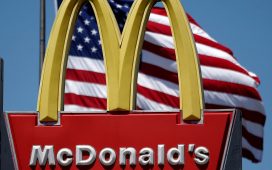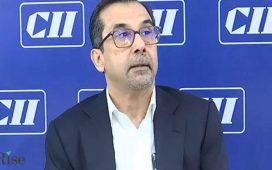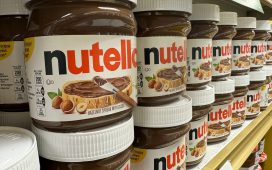Stay informed with free updates
Simply sign up to the UK inflation myFT Digest — delivered directly to your inbox.
UK grocery price inflation fell to a 30-month low in April, according to data that pointed to an easing of the cost of living crisis that has hit millions of households since late 2021.
Grocery price inflation fell to 3.2 per cent in the four weeks to mid-April, down from 4.5 per cent last month and the lowest rate since November 2021, research company Kantar said on Tuesday.
Kantar said the decline was aided by a significant increase in promotional spending by retailers, with items bought on offer making up 29.3 per cent of supermarket sales in April — the largest share outside the Christmas period since June 2021.
Fraser McKevitt, head of retail and consumer insight at Kantar, said: “This emphasis on offers, coupled with falling prices in some categories like toilet tissues, butter and milk, has helped to bring the rate of grocery inflation down for shoppers at the till.”
Food inflation was the largest driver of the fall in the official measure of the UK headline price growth to 3.2 per cent in March from 3.4 per cent in the previous month. Most economists and the Bank of England expect headline inflation to drop below the BoE’s target of 2 per cent from the spring, reflecting the fall in the energy bills cap from April.
Kantar data suggests that price growth will continue to ease beyond the energy sector. The official inflation figure for April will be published on May 22. Lower grocery inflation could help support higher spending, helping the economy to rebound from last year’s recession, as real wages continue to rise at a steady pace.
In February, the BoE forecast that inflation would rise again to about 3 per cent by the end of next year. However, the rate setter Sir Dave Ramsden said last week that inflation could stay near 2 per cent for the next three years.
Economists polled by Reuters also forecast inflation to stand at about 2.2 per cent in each quarter until at least the end of next year.
Wholesale energy and food prices soared last summer following Russia’s full-scale invasion of Ukraine in 2022. That pushed the official food inflation measure to a 45-year high of 19.2 per cent in March 2023, hitting the poorest households the hardest.
However, the measure of food inflation from the Office for National Statistics dropped to 4 per cent in March, the lowest since November 2021, with the price of fish and dairy products dropping to a lower level than in the same month last year.
Kantar also reported that both more expensive and cheaper supermarkets reported fast sales growth, in contrast with the stronger performance of the latter for most of the cost of living crisis.
The online retailer Ocado was the fastest growing grocer this month, improving sales by 12.5 per cent in the 12 weeks to April 14, but the discount store Lidl also achieved a record 8 per cent share of the market, fuelled by sales growth of 9.1 per cent.









